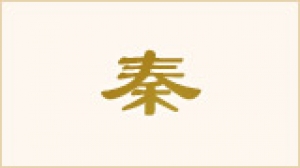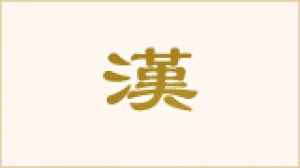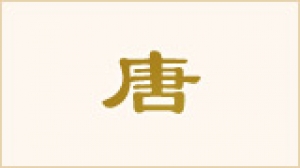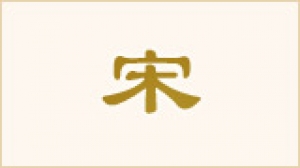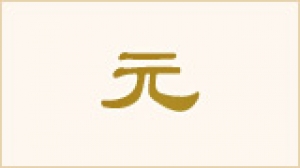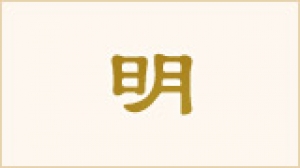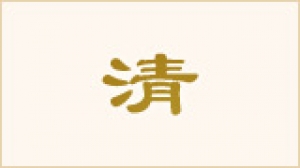Dinasti Utara dan Selatan
Dinasti Selatan dan Utara (420–589 M.) adalah tempoh pergolakan besar. Pelbagai jeneral memperoleh kawalan ke atas China yang berpecah dan masing-masing memerintah selama beberapa dekad. Akhirnya, mereka gagal untuk memastikan peralihan kuasa kepada waris mereka, dan dengan itu gagal menubuhkan dinasti yang lebih tahan lama atau menyatukan China. Pada masa yang sama, ini adalah era aktif untuk penyebaran agama Buddha dan seni yang diilhamkan oleh Buddha di China.
Selepas tempoh berdarah Tiga Kerajaan, Maharaja Tentera menyatukan semula China sekitar tahun 265, menubuhkan Dinasti Jin Barat. Akhirnya, perselisihan dalaman di istana imperial menjadikan Jin Barat terdedah kepada pencerobohan oleh puak nomad dari utara. Kerajaan berpindah ke Nanjing dan menubuhkan Dinasti Jin Timur di selatan Sungai Yangtze. Pada tahun 420, panglima perang Liu Yu menggulingkan maharaja dan mengasaskan entiti politik pertama dalam siri Dinasti Selatan. Sepanjang 150 tahun berikutnya, kuasa ke atas wilayah selatan China akan terus bertukar tangan di kalangan tiga keluarga.
Sementara itu, wilayah di utara Yangtze mengalami pemberontakan oleh penduduk bukan Cina Han, dan penubuhan sekurang-kurangnya 16 kerajaan kecil. Puak Mongol yang dipanggil Xianbei mengambil alih kawalan dan menubuhkan Dinasti Wei Utara, yang berlangsung selama kira-kira satu abad. Selepas kejatuhannya, semasa tempoh singkat 534–581, kuasa di utara bertukar tangan empat kali.
Walaupun kebanyakan lelaki yang merampas kuasa semasa Dinasti Selatan dan Utara adalah daripada kumpulan etnik minoriti, mereka dengan cepat berasimilasi dengan budaya Han. Contoh paling menonjol dalam proses ini adalah semasa pemerintahan Maharaja Xiaowen dari Wei Utara (467–499). Beliau memindahkan ibu kota ke Luoyang, hab imperial beberapa dinasti Cina sebelumnya. Dari situ, beliau mengeluarkan pelbagai perintah yang memerlukan penggunaan sistematik elemen budaya Cina.
Beliau meluluskan perintah yang memerlukan semua orang Xianbei mengambil nama keluarga Han, sendiri mengambil nama keluarga Yuanin menggantikan nama etniknya Tuoba. Beliau mengarahkan rakyatnya memakai pakaian gaya Han dan bertutur dalam bahasa Han, dan menggalakkan mereka membuat perikatan perkahwinan dengan keluarga Han yang memiliki tanah. Dalam hal ehwal awam, Maharaja Xiaowen merujuk undang-undang dinasti pimpinan Han selatan untuk menyemak tadbir urus Wei Utara.
Tempoh Dinasti Utara dan Selatan memupuk perkembangan besar agama Buddha. Gua Yungang di wilayah Shanxi—siri gua yang menakjubkan yang mengandungi lebih 51,000 patung Buddha—dibina dan diukir di bawah pemerintahan Wei Utara dan dianggap sebagai salah satu daripada Empat Gua Agung China. Ciri-ciri fizikal dan penampilan patung-patung itu menunjukkan pengaruh asing yang jelas, termasuk muka bulat, mata dalam, dan hidung mancung. Selepas langkah asimilasi Maharaja Xiaowen, patung-patung yang dicipta pada era kemudian mengambil ciri-ciri fizikal dan pakaian yang lebih menyerupai Han.
Menjelang awal abad keenam, sami India Bodhidharma telah mengembara ke China dan diterima oleh Maharaja Liang Wudi, yang merupakan seorang peminat Buddha. Pertemuan singkat mereka terbukti tidak berjaya, dan oleh itu Bodhidharma meneruskan pelayaran legenda menyeberangi Sungai Yangtze yang perkasa sambil berdiri di atas satu tangkai buluh. Selepas tiba di Gunung Song berhampiran Kuil Shaolin yang kini terkenal, Bodhidharma memasuki gua dan bermeditasi dalam keadaan khusyuk selama sembilan tahun. Setelah mencapai pencerahan, Bodhidharma mengasaskan aliran Zen Buddhisme. Zen Buddhisme secara beransur-ansur turut memberi impak yang signifikan kepada teori Konfusian dan agama Asia secara lebih luas.
Sementara sami-sami bermeditasi, pertempuran untuk memerintah tian xia, atau “semua di bawah langit,” berterusan. Pada tahun 581, Maharaja Wen dari Sui mengalahkan Maharaja Jing dari Zhou Utara dan mengasaskan dinasti Sui. Tentera Sui kemudiannya meneruskan perjalanan ke selatan, menakluki wilayah selatan dan menyatukan semula China selepas 300 tahun pemecahan dan peperangan. Beberapa dekad kemudian, Dinasti Tang bermula, memulakan salah satu era paling stabil dan gemilang dalam sejarah China.
July 14, 2011


